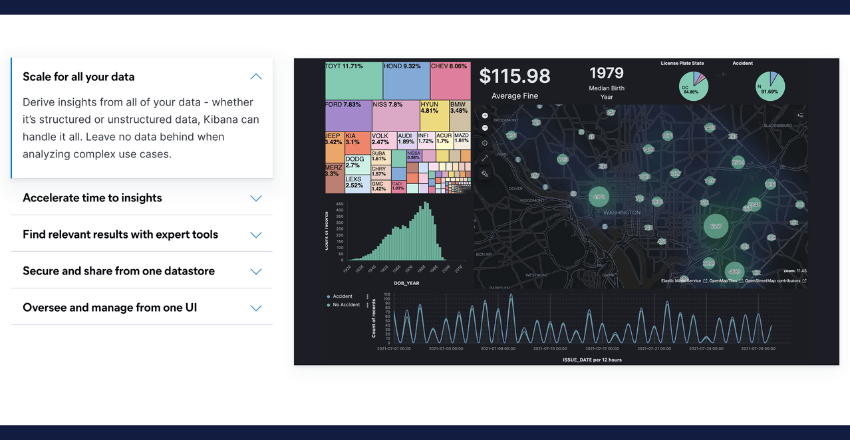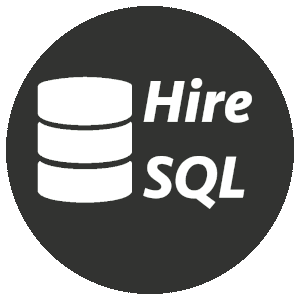Elasticsearch: A NoSQL Database?
In the realm of data storage and retrieval, you might encounter Elasticsearch. Is it a NoSQL database? Partially, yes. While Elasticsearch wears the hat of a search engine predominantly, it aligns with NoSQL databases in certain ways.
It employs a document-oriented data model, which is characteristic of NoSQL, facilitating complex querying and data filtering. Yet, it differs from standard NoSQL databases as it prioritizes search operations over typical data storage and retrieval.
Elasticsearch vs. Relational Databases
Contrastingly, relational databases like MySQL manage data through inter-table relationships.
Elasticsearch, however, leverages indexes for arranging data, promoting swift and efficient search queries. Consequently, while Elasticsearch doesn’t exactly fit into the traditional NoSQL database framework, it shares enough commonalities to be viewed as one in several contexts.
Understanding Elasticsearch – Is Elasticsearch a NOSQL Database
Exploring Elasticsearch
Immerse yourself in the world of Elasticsearch, a captivating, open-source engine dedicated to search and analytics. Ingeniously crafted with Java, this platform boasts the capacity to manage immense datasets, execute real-time search and analytics.
Consider Elasticsearch as an impressive NoSQL database, finely tuned for full-text search, structured search, and analytics.
With its hallmark of denormalized data storage and a versatile data model, Elasticsearch emerges as the ideal choice for handling unstructured data.
Kibana: Elasticsearch’s Powerful Sidekick
In an exciting alliance, Elasticsearch comes equipped with a potent search interface known as Kibana. This tool gifts users with a web-based graphical user interface for querying and visualizing data housed in Elasticsearch. Thanks to Kibana, users can dive deep into large data sets and create a diverse range of visualizations.
What is Elasticsearch Used For?
Elasticsearch is used for a wide range of applications, including:
- Enterprise search – providing search functionality for websites, intranets, and other enterprise applications.
- Logging and log analysis – aggregating and analyzing log data from multiple sources, such as web servers, application servers, and databases.
- Security analytics – detecting and analyzing security events, such as network intrusion attempts, using machine learning algorithms.
- Metrics analysis – collecting and analyzing metrics data for monitoring system and application performance.
Elasticsearch can also be used in conjunction with other tools in the Elastic Stack, which includes Logstash for data ingestion and Beats for data collection.
Exploring Elasticsearch’s Features
Elasticsearch provides a rich set of features that make it ideal for a variety of applications:
| Feature | Description |
|---|---|
| Distributed architecture | Elasticsearch is designed to be distributed across multiple nodes, enabling it to handle large datasets. |
| Scalability | Elasticsearch can scale horizontally by adding more nodes to a cluster, making it suitable for handling large amounts of data. |
| Real-time search | Elasticsearch provides real-time indexing and search capabilities, enabling users to search large datasets in real-time. |
| Full-text search | Elasticsearch is optimized for full-text search, supporting complex queries including phrase matching, fuzzy matching, and wildcard search. |
| Structured search | Elasticsearch also supports structured search, enabling users to perform queries on specific fields or combinations of fields. |
| Analytics | Elasticsearch can be used for analytics, providing support for aggregations, filtering, and data visualization. |
Elasticsearch’s flexibility and scalability make it a popular choice for organizations that need to perform real-time search and analytics on large datasets.
Its ability to handle unstructured data and perform complex search queries make it an attractive option for applications that require advanced search functionality.
Comparing Elasticsearch with MongoDB
Elasticsearch vs MongoDB: A NoSQL Comparison
A common comparison within the NoSQL universe involves Elasticsearch and MongoDB. Although both fall under the NoSQL category, their differences are noteworthy.
Primary Design
Elasticsearch primarily operates as a search engine, contrasting with MongoDB’s main function as a document database. Consequently, Elasticsearch is fine-tuned for search and retrieval operations, while MongoDB excels in CRUD (Create, Read, Update, Delete) operations on individual documents.
Data Structure and Organization
Their data structuring and organization also differ. Elasticsearch organizes data in document form, indexing them for swift search and retrieval. In contrast, MongoDB stores data in collections, each consisting of individual documents.
Scalability
In handling large datasets, both databases offer sharding and replication. Yet, Elasticsearch’s distributed architecture and inverted indices usage lend it exceptional efficiency in executing search operations on massive datasets.
Use Cases
Elasticsearch finds its niche in environments necessitating robust search capabilities – e-commerce websites, log analytics, and social media platforms, to name a few. Conversely, MongoDB thrives in situations demanding intricate document management, such as content management systems and product catalogs.
Making the Right Choice
The final verdict between Elasticsearch and MongoDB hinges on the specific use case and application requirements. While Elasticsearch shines in search and retrieval operations on large datasets, MongoDB fits neatly into more generic, document management scenarios.
Elasticsearch as a Search Engine

The Power of Elasticsearch: An Ideal Search Solution
Elasticsearch’s reputation predominantly hinges on its superior search capabilities. It emerges as the go-to choice for applications demanding robust and efficient search functionality.
Abandoning the traditional SQL-reliant databases, Elasticsearch employs a unique query language named Elasticsearch Query Domain Specific Language (DSL) to sift through data. The DSL empowers users to search based on specific criteria – geographic location, product type, or customer demographics.
Enhanced Search Engine Capabilities
Elasticsearch adds more muscle to its search engine capabilities by supporting full-text search and dynamic faceting. Its full-text search allows users to probe across multiple fields and data types such as text, numeric, and date fields.
Moreover, dynamic faceting in Elasticsearch facilitates users to refine search results according to predetermined categories or ranges.
Creating Powerful Search Applications
Elasticsearch’s search capabilities enable businesses to build powerful search applications delivering fast and accurate results. Be it an e-commerce platform, a customer service portal, or a data analytics tool, Elasticsearch’s search features position it as a favored choice for developers and businesses.
Elasticsearch’s Data Model
The Document Structure of Elasticsearch
Elasticsearch preserves data in a particular structure called a document. Each document embodies various fields which signify different data attributes. These fields might contain either a single or multiple values, relying on the data type.
Elasticsearch accommodates a broad spectrum of data types, such as text, keyword, numeric, date, and boolean.
Organization of Data: Indices and Shards
Data organization in Elasticsearch revolves around indices, bearing similarities to tables in a relational database. An index encompasses one or more shards – autonomous units of data storage and processing. Shards spread across multiple nodes in a cluster, ensuring scalability and fault tolerance.
Efficient Querying and Filtering with Elasticsearch
Elasticsearch’s data model paves the way for efficient data querying and filtering via a simple and user-friendly syntax. You can explore documents based on specified criteria using queries, filters, and aggregations.
Additionally, the data model facilitates full-text search, empowering you to unearth relevant data within vast volumes of unstructured information.
Indexing and Searching Data in Elasticsearch
Elasticsearch is designed to provide quick and efficient search results for large volumes of data. The process of indexing and searching data in Elasticsearch is a crucial aspect of its functionality. Here’s what you need to know.
Creating Indexes
Before you can start storing data in Elasticsearch, you need to create an index. An index is similar to a database in the world of traditional relational databases. An index consists of one or more shards, which store the data and make it searchable. To create an index in Elasticsearch, you can use the PUT API call.
PUT /my_index { "settings": { ... }, "mappings": { ... } }
The above example illustrates how to create an index called “my_index” using the PUT API call. You can specify the settings and mappings for the index within the JSON body of the request.
Mapping Data
Mapping is the process of defining the fields and properties for the data that will be stored in Elasticsearch. It allows Elasticsearch to understand the data structure and apply relevant analyzers during the indexing process. You can define mappings at the index level or the field level.
PUT /my_index/_mapping { "properties": { "title": { "type": "text" }, "description": { "type": "text" } } }
The above example shows how to define mappings for the “title” and “description” fields within an index called “my_index”. Here, we’re specifying that both fields should be of the “text” data type.
Executing Search Queries
Once data is indexed and mapped in Elasticsearch, you can start executing search queries. Elasticsearch supports a wide range of search queries, including simple string queries and complex aggregations. Here’s an example of a simple search query:
GET /my_index/_search { "query": { "match": { "title": "Elasticsearch" } } }
The above example shows how you can retrieve all documents from the “my_index” index that contain the word “Elasticsearch” in the “title” field. You can also apply filters to narrow down the search results.
Overall, indexing and searching data in Elasticsearch is a powerful and flexible process that can help you quickly and efficiently retrieve the information you need.
Scaling Elasticsearch for Large Datasets
Elasticsearch is known for its ability to handle large datasets efficiently, making it a popular choice for applications with high volumes of data. However, as datasets grow, Elasticsearch clusters must be scaled to ensure the continued reliability and performance of the system.
Scaling Elasticsearch involves adding more nodes to the cluster to distribute the data and processing workload across multiple machines. This allows Elasticsearch to handle larger datasets without sacrificing performance.
There are two main approaches to Scaling Elasticsearch:
- Vertical Scaling: Involves adding more resources to individual nodes in the cluster, such as adding more RAM or CPU cores. This approach is suitable for smaller datasets or applications with low traffic volume.
- Horizontal Scaling: Involves adding more nodes to the cluster, distributing the workload across multiple machines. This approach is suitable for larger datasets or applications with high traffic volume.
Scaling Elasticsearch: Horizontal Scaling
For managing large datasets, horizontal scaling is the go-to method in Elasticsearch. This technique guarantees superior fault tolerance, heightened availability, and impressive performance.
Moreover, horizontal scaling lets the cluster smoothly manage escalating traffic volume without impacting application performance.
Sharding: Essential for Efficient Scaling
For effective horizontal scaling, Elasticsearch calls for a sharding mechanism. Sharding involves dividing large datasets into smaller, manageable chunks for distribution across multiple nodes.
Elasticsearch delivers automatic sharding, considering the number of nodes in the cluster and the shards in an index. However, you can tailor sharding strategies to fit specific needs based on the size and complexity of the dataset.
Monitoring for Performance and Health
When scaling Elasticsearch, regular monitoring of cluster performance and health is crucial. Tools like Elasticsearch’s built-in monitoring features, Elasticsearch Head, and Cerebro can ensure the continued performance and reliability of the cluster.
Monitoring and Maintenance in Elasticsearch
Once an Elasticsearch cluster is up and running, it is important to monitor its health and performance to ensure that it continues to function optimally. There are several tools and techniques available for monitoring and maintaining Elasticsearch deployments.
Monitoring
Monitoring Cluster Health and Performance with Elasticsearch
To effectively monitor cluster health and performance, Elasticsearch equips you with a dedicated monitoring API. This tool serves critical metrics including memory usage, CPU usage, disk usage, indexing rates, search rates, and query latency.
You can leverage these metrics to pinpoint performance issues and bottlenecks within the cluster.
Enhanced Monitoring with Kibana

Transitioning to another powerful monitoring tool, Kibana – a key component of the Elastic Stack – provides real-time visualizations and dashboards to track cluster health and performance. This real-time tracking offers an additional layer of transparency and control over your Elasticsearch environment.
Maintenance
Elasticsearch Maintenance: Ensuring a Healthy Cluster
Running a smooth and healthy Elasticsearch cluster involves executing a range of maintenance tasks. These tasks encompass data backup and restoration, upgrading Elasticsearch versions, and managing the cluster’s resources.
Data Backup and Restoration: Snapshot and Restore
Elasticsearch offers a snapshot and restore function for backing up and restoring data in the cluster. This feature is vital for mission-critical applications where data loss is unacceptable.
Upgrading Elasticsearch: A Cautionary Approach
Upgrades to Elasticsearch versions should be undertaken cautiously to prevent data loss or downtime. Elasticsearch provides upgrade guides which should be adhered to meticulously when enhancing the cluster.
Managing Cluster Resources: Shards, Node Roles, Performance Tuning
To manage cluster resources effectively, you’ll allocate and rebalance shards, assign node roles and responsibilities, and tweak performance settings. Elasticsearch equips you with helpful tools like the Cluster Allocation API and the Cluster Settings API for this purpose.
Proactive Monitoring and Maintenance
Active monitoring and maintenance are paramount for ensuring the performance and health of Elasticsearch clusters. Using appropriate tools and techniques, you can maintain smooth and efficient operations of Elasticsearch deployments.
Frequently Asked Questions – Is Elasticsearch a NOSQL Database

Here are some frequently asked questions about Elasticsearch:
1. What is Elasticsearch used for?
Primarily, Elasticsearch serves as a reservoir for storing, retrieving, and searching vast quantities of data with exceptional speed and efficiency. Its powers are harnessed in applications demanding rapid and potent search functionality – think e-commerce sites, social media platforms, and data analytics systems.
2. Is Elasticsearch a NoSQL database?
Undoubtedly, Elasticsearch qualifies as a NoSQL database. However, its distinction lies in its use. Unlike traditional NoSQL databases centered around general-purpose data storage, Elasticsearch shines in search and analytics.
3. How does Elasticsearch differ from MongoDB?
While Elasticsearch and MongoDB both reside within the broad NoSQL ecosystem, their core competencies and applications diverge noticeably.
Elasticsearch: Dominating the Search and Analytics Arena
Elasticsearch proves its mettle in the realms of search and analytics, exploiting its optimized design to the fullest.
MongoDB: Excelling in Document-Oriented Applications
Contrastingly, MongoDB, entrenched in the document-oriented database paradigm, emerges triumphant in applications requiring flexible data models.
4. Can Elasticsearch handle large datasets?
Elasticsearch is crafted to manage large datasets efficiently. It escalates horizontally by incorporating additional nodes into a cluster and employs sharding and replication features to bolster high availability and reliability.
5. How do you monitor and maintain Elasticsearch?
Elasticsearch equips users with an array of tools to monitor and maintain clusters, such as the Elasticsearch monitoring plugin and the Kibana monitoring dashboard.
To preserve your cluster’s health and performance, regular tasks like data backups and index optimization are indispensable.
6. What programming languages can be used with Elasticsearch?
Elasticsearch avails official clients for an assortment of programming languages, including Java, Python, and PHP. Plus, it’s flexible. Courtesy of its RESTful API, you can work with any language that can fire off HTTP requests and parse JSON responses.
For More Information
Delve into the comprehensive Elasticsearch documentation directly. Alternatively, engage with the Elasticsearch community for insightful support.
Sarah is an accomplished author, esteemed for her expertise in the field of data science and her engaging written works that cater specifically to the data industry. Residing in the vibrant city of London, she embarked on an academic journey at Cambridge University, where she immersed herself in the world of mathematics. This foundational education formed the bedrock of her illustrious career.
Driven by a desire to broaden her horizons, Sarah sought new challenges and opportunities, leading her to embrace a pivotal role at NetApp, a renowned data storage consultancy firm. In this capacity, she thrived in the dynamic landscape of data architecture, devising innovative strategies to optimize data storage, retrieval, and management for a diverse range of clients. Sarah’s intricate understanding of the intricacies of data systems and her ability to craft tailor-made solutions earned her accolades and solidified her reputation as a sought-after industry expert.
Beyond her professional pursuits, Sarah gracefully balances her roles as a devoted mother and an accomplished equestrian. She finds immeasurable joy in nurturing her daughter, guiding her through the intricacies of life, and instilling a love for knowledge and creativity. Sarah’s dedication to both her family and her career exemplifies her unwavering commitment to excellence in all facets of life.








